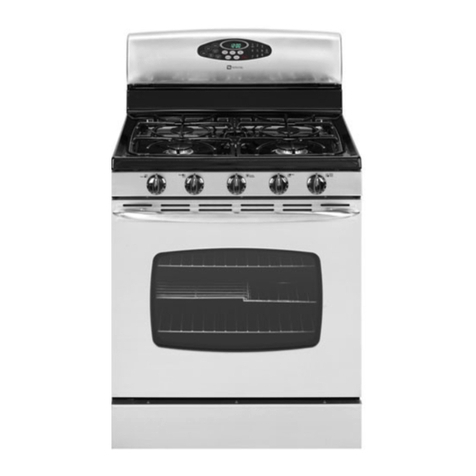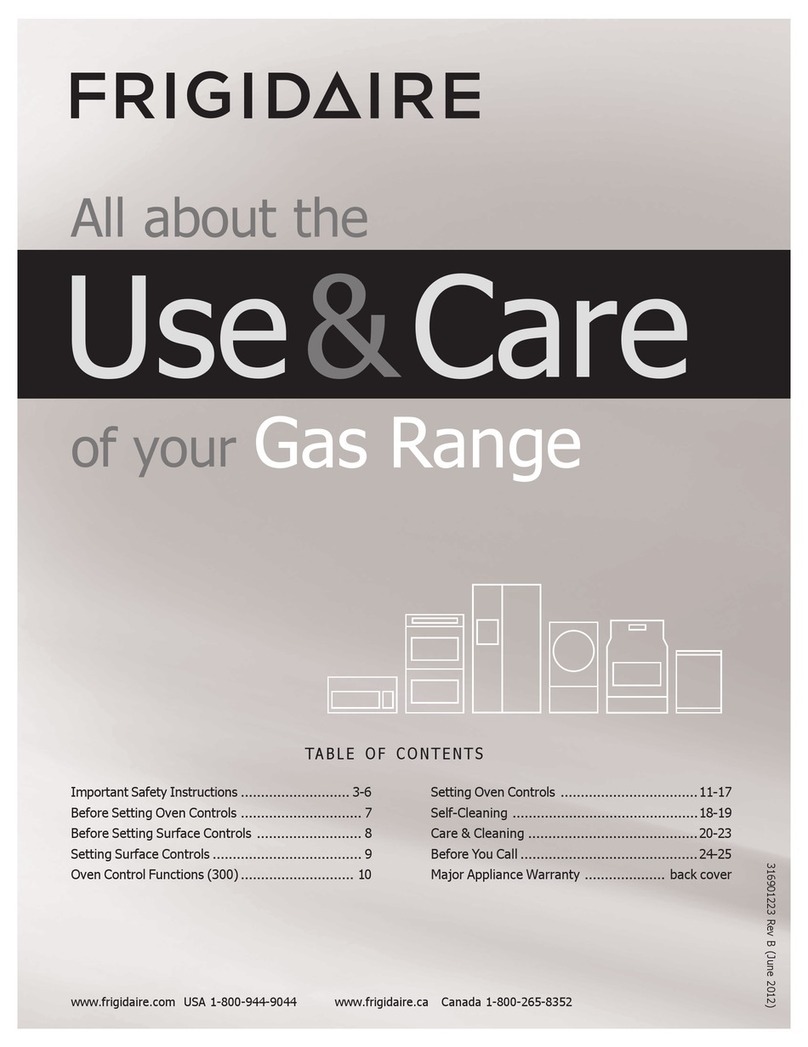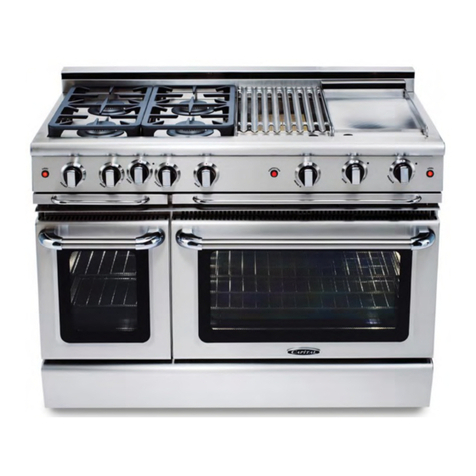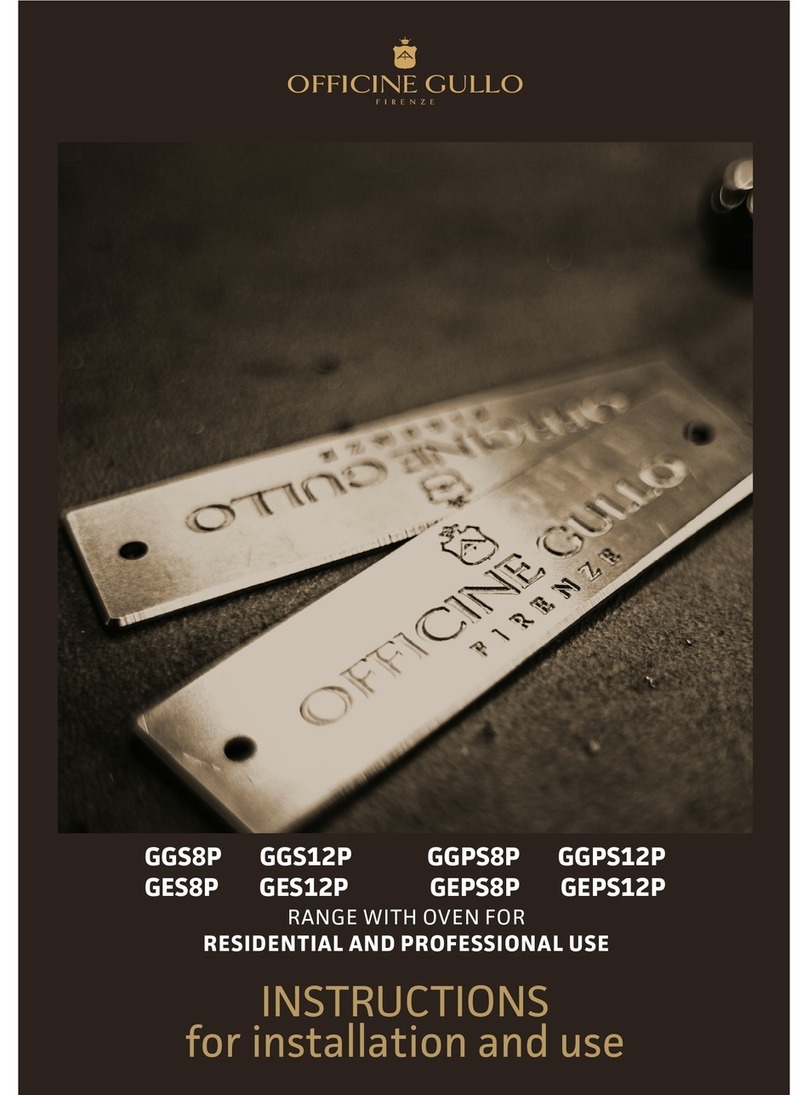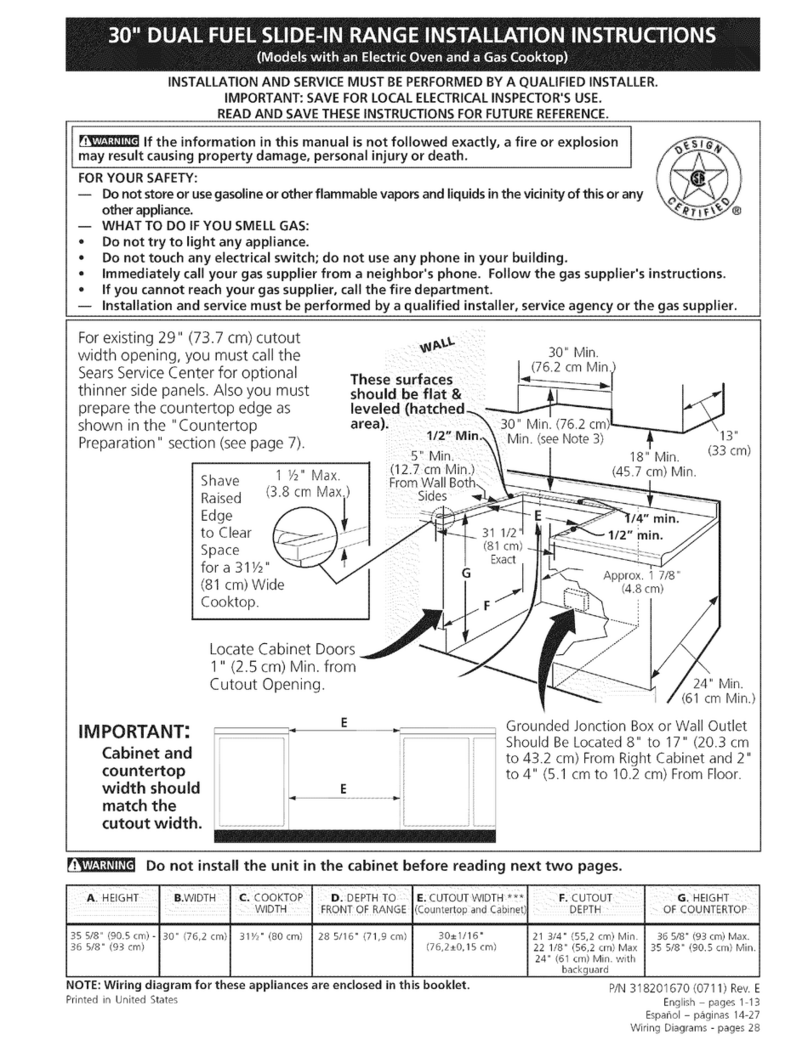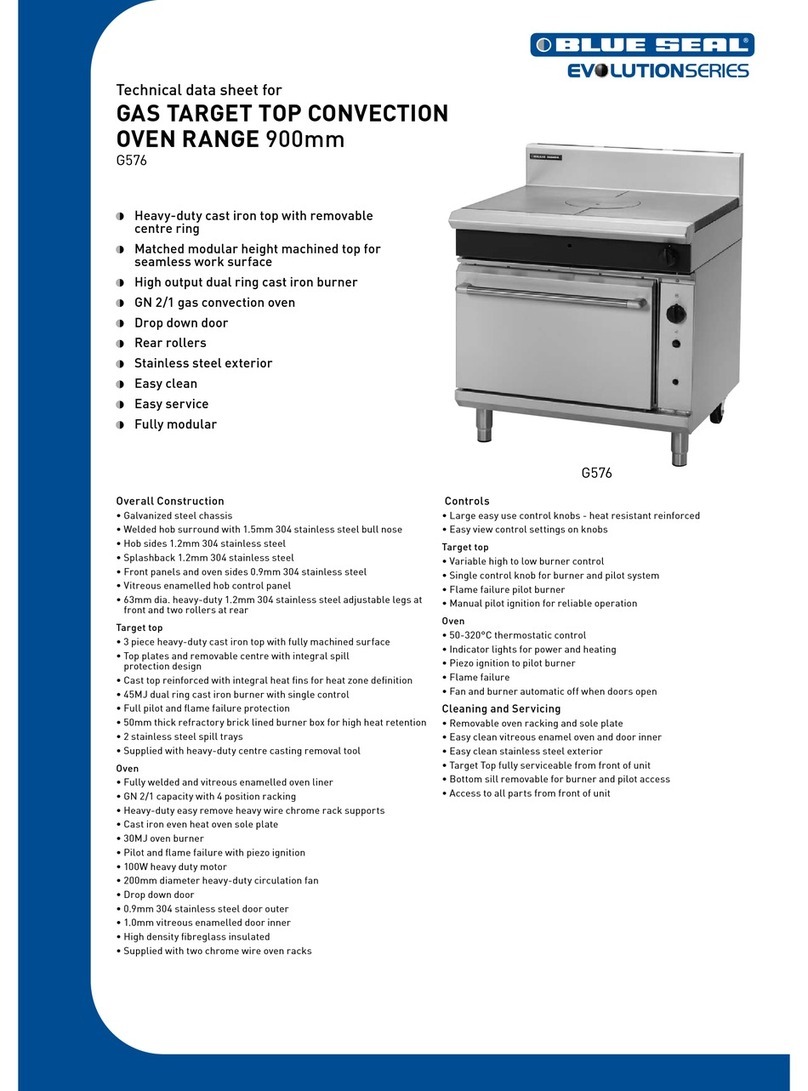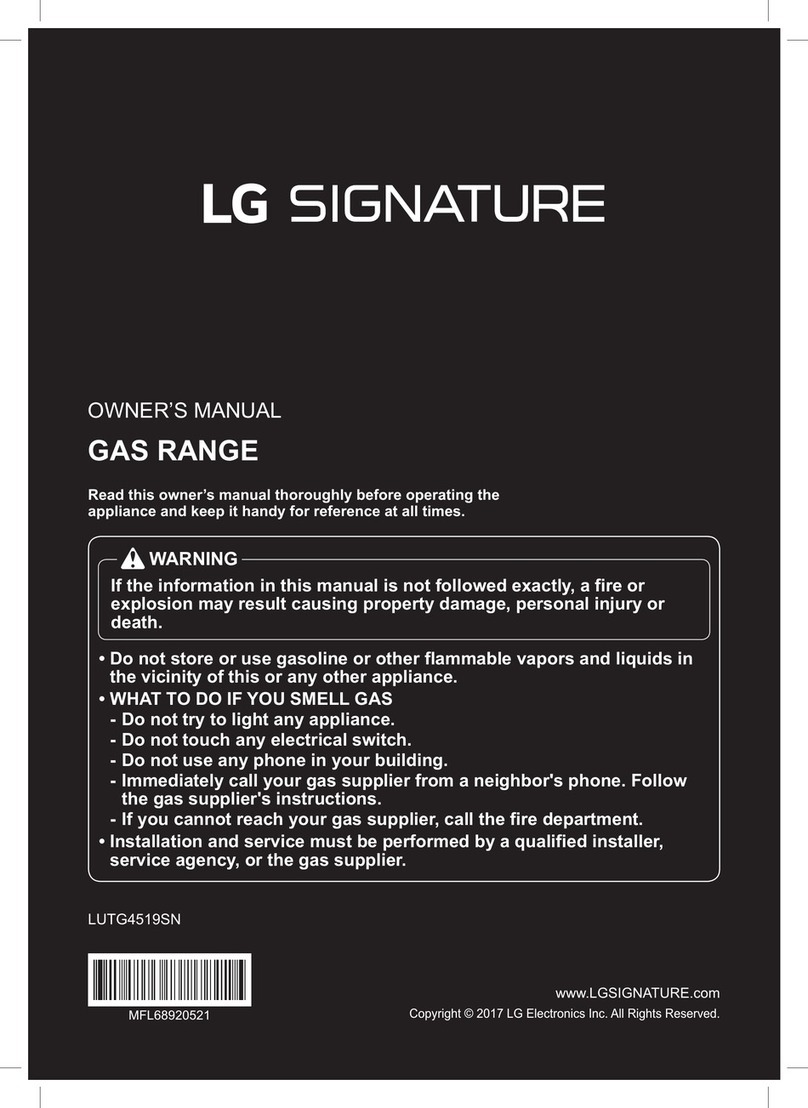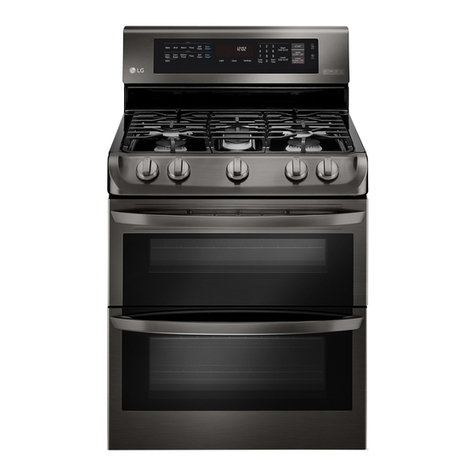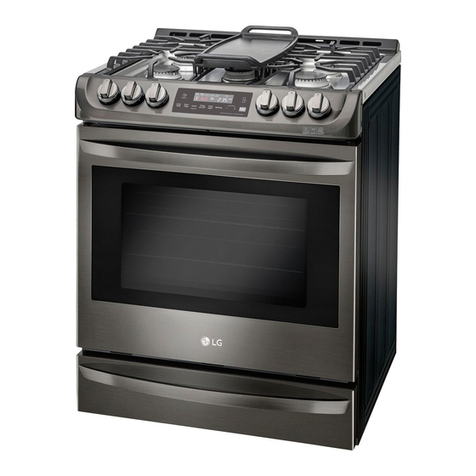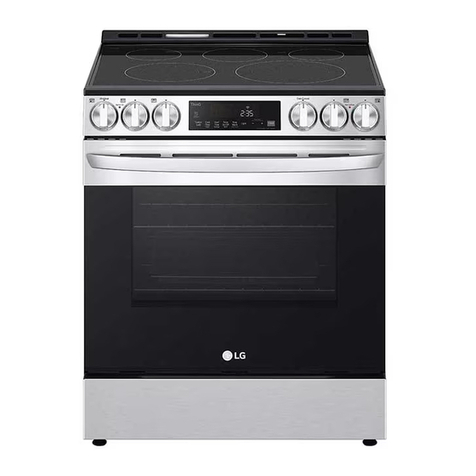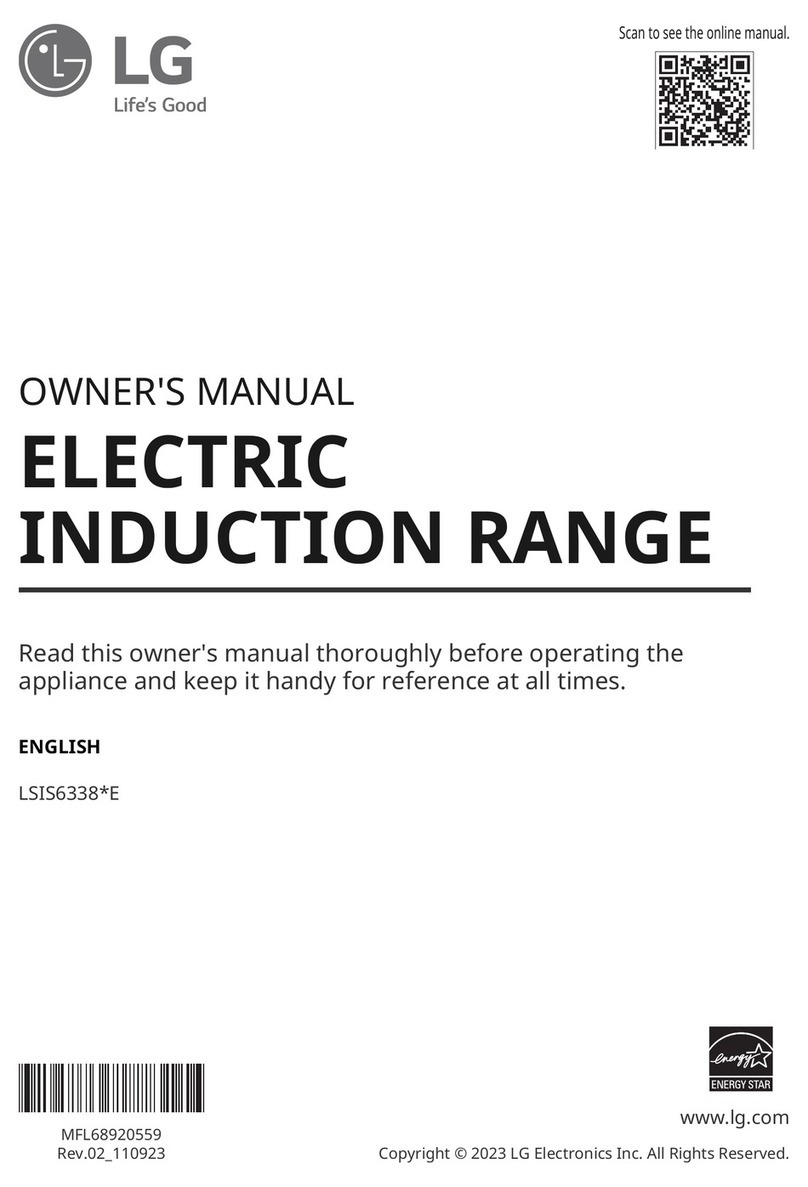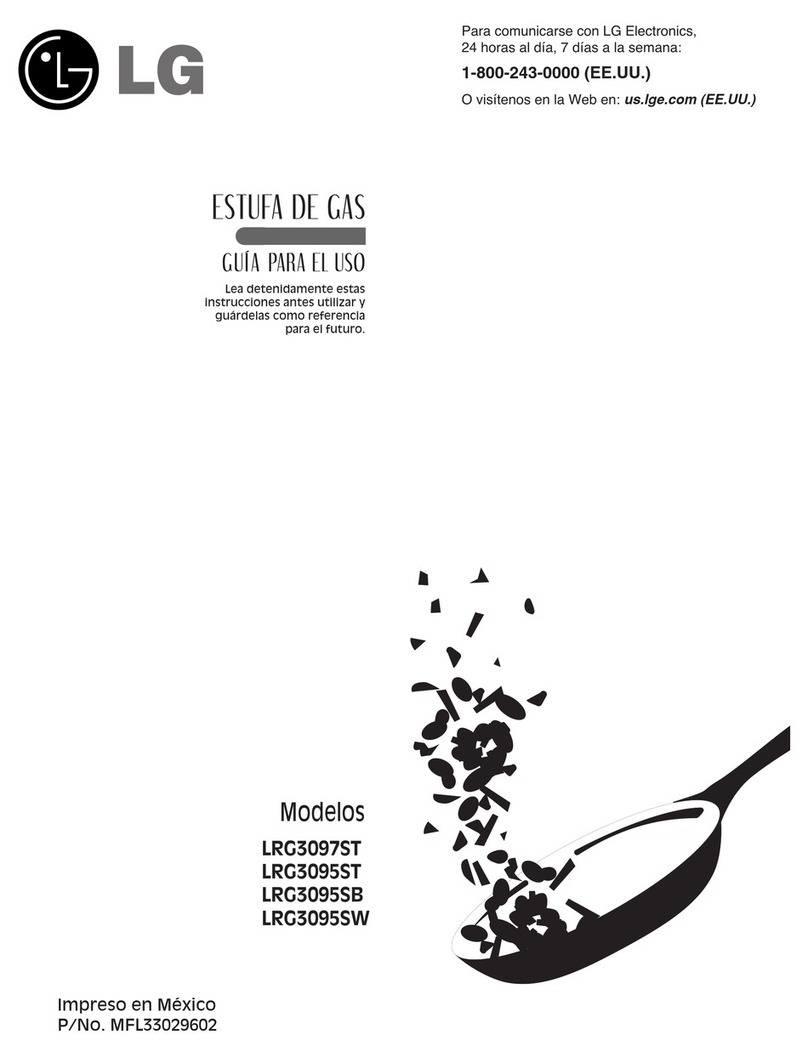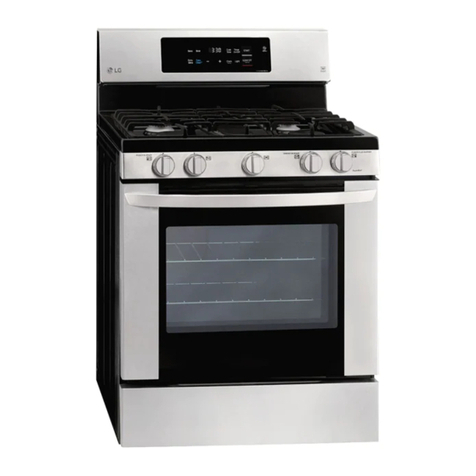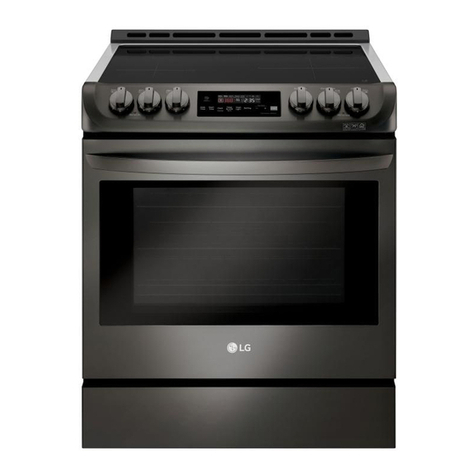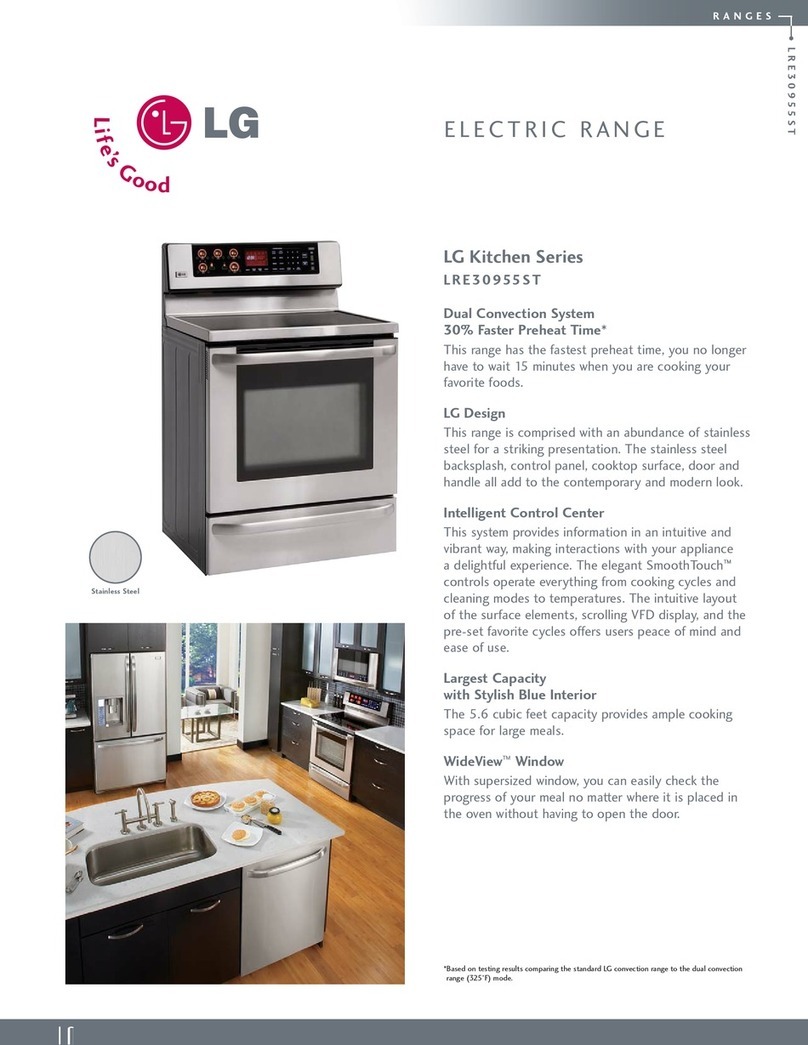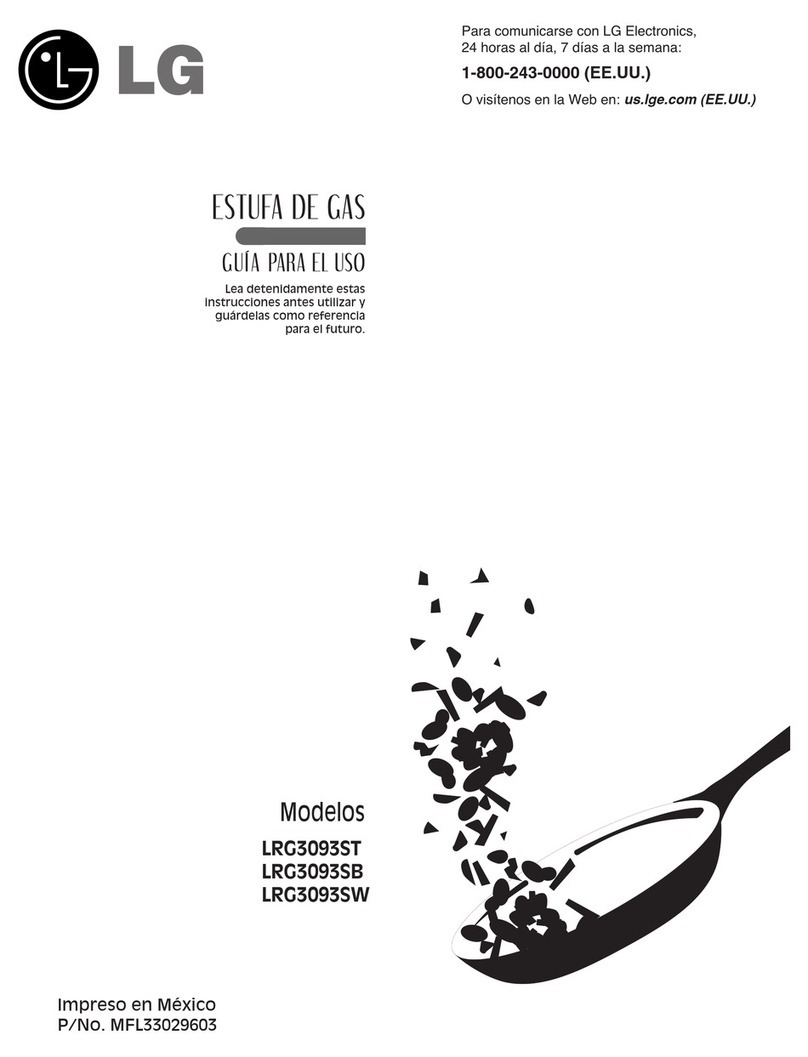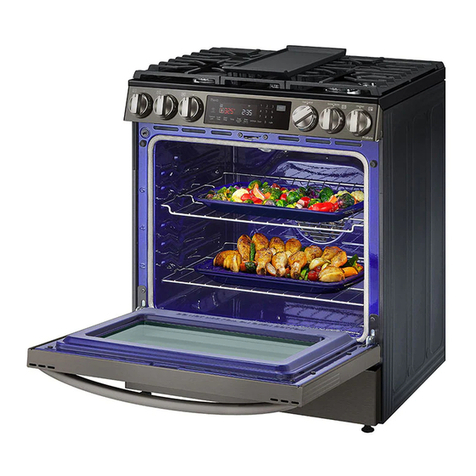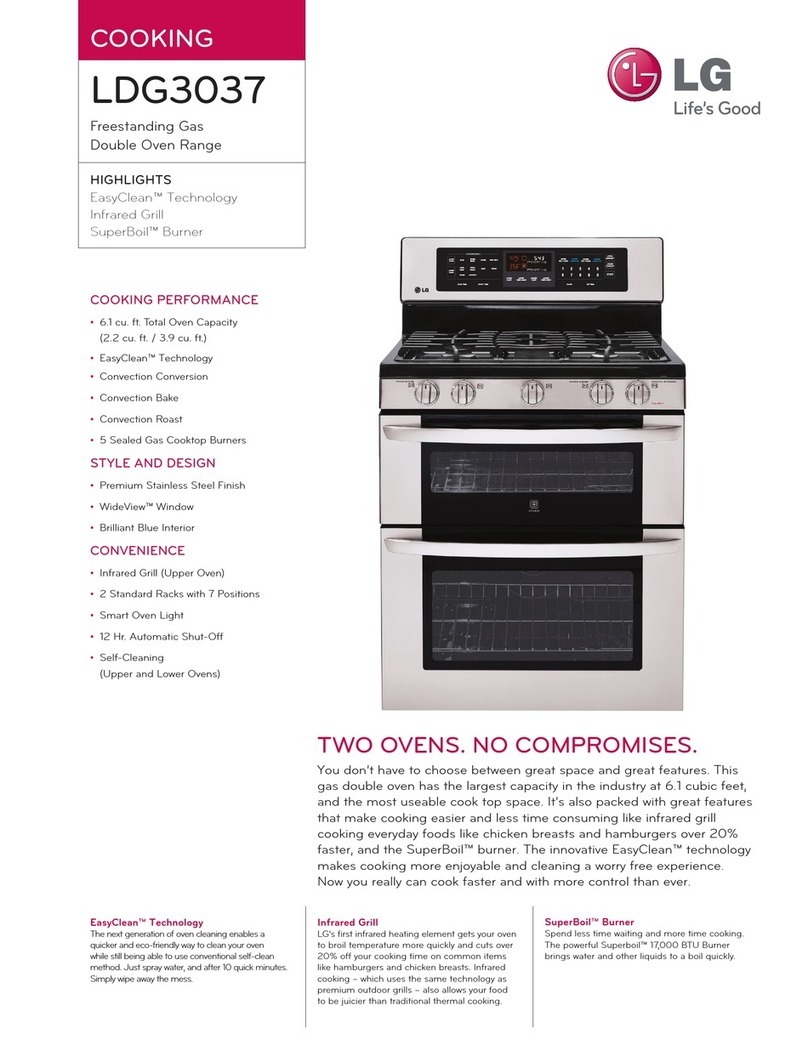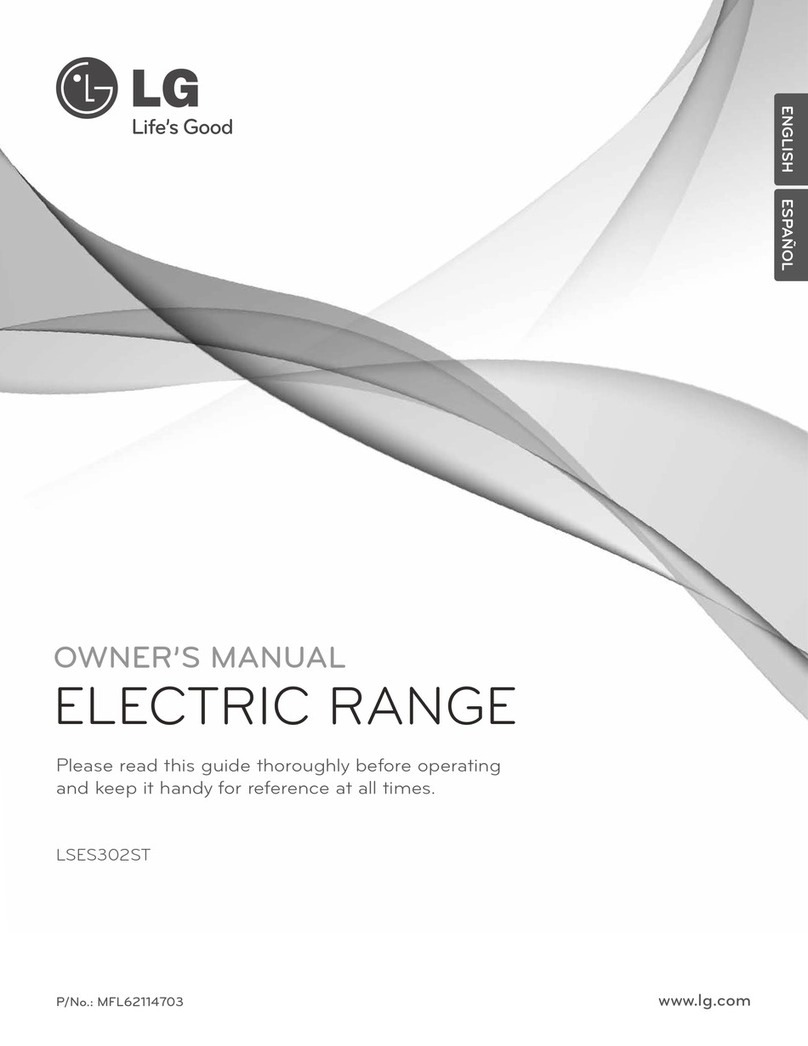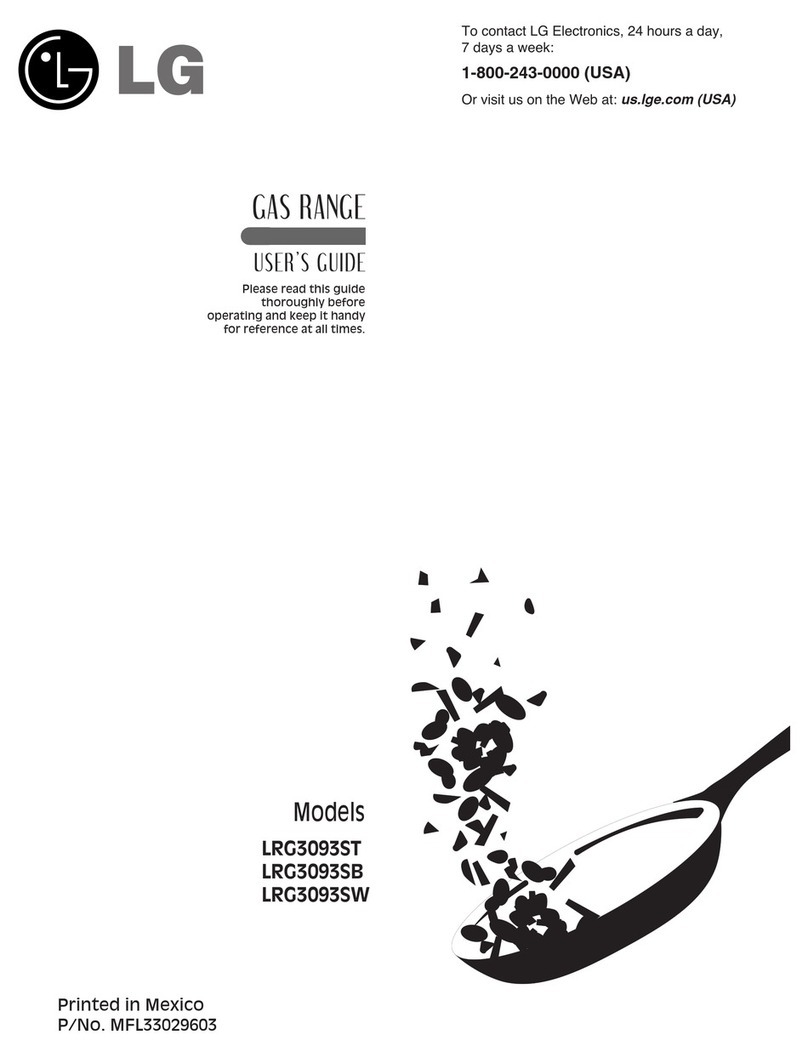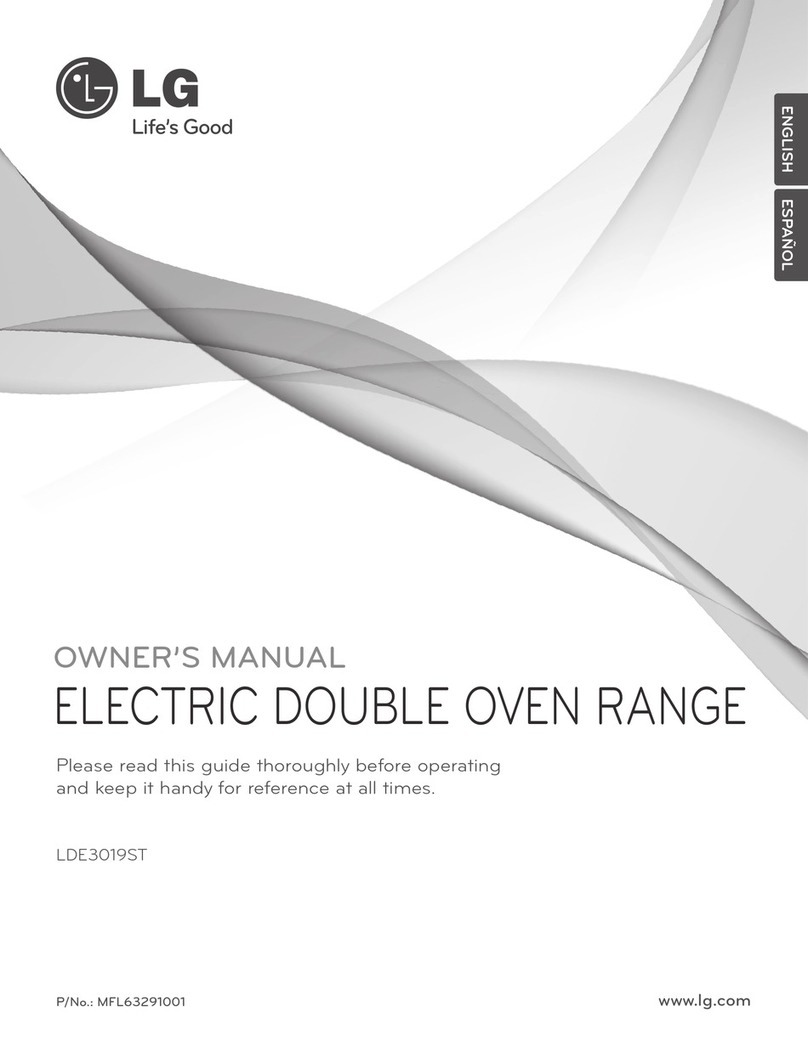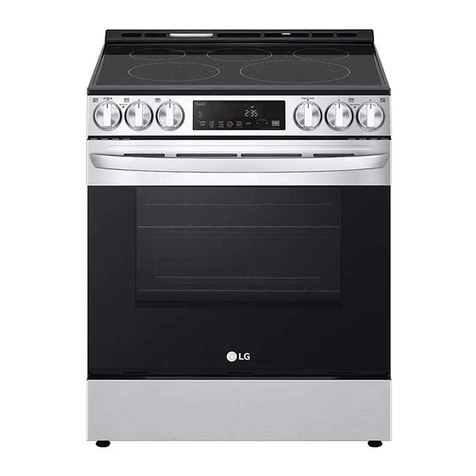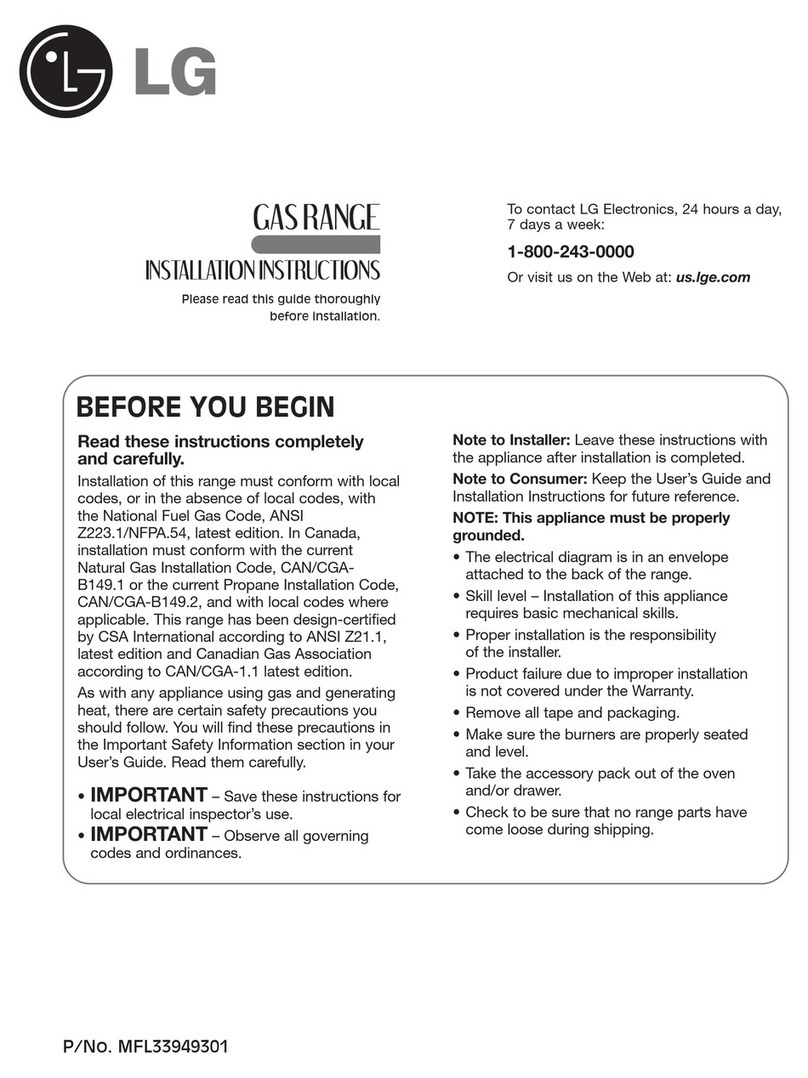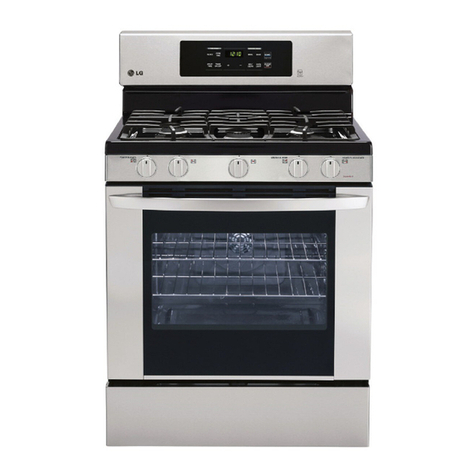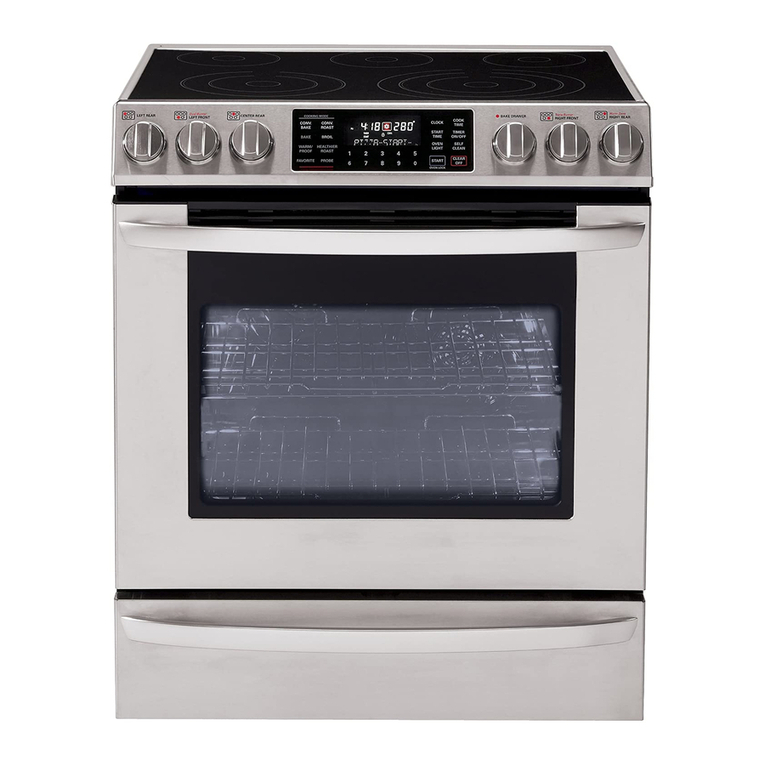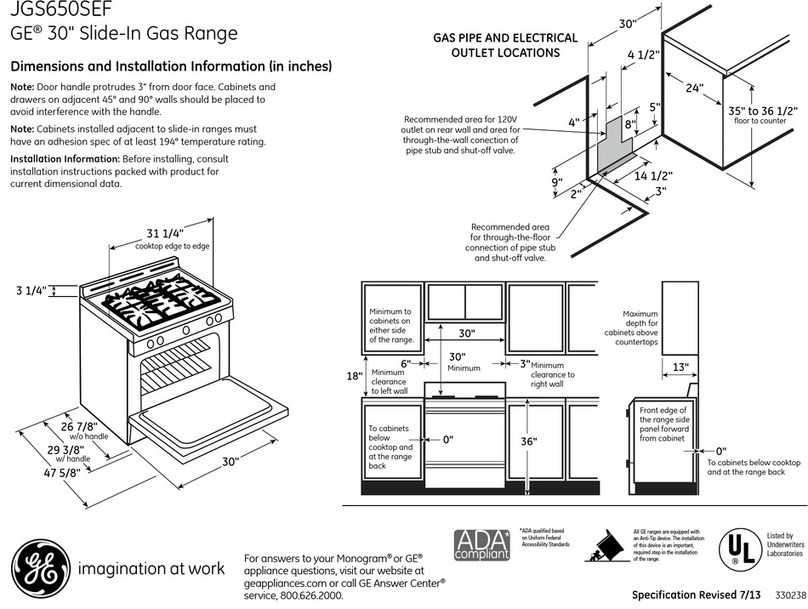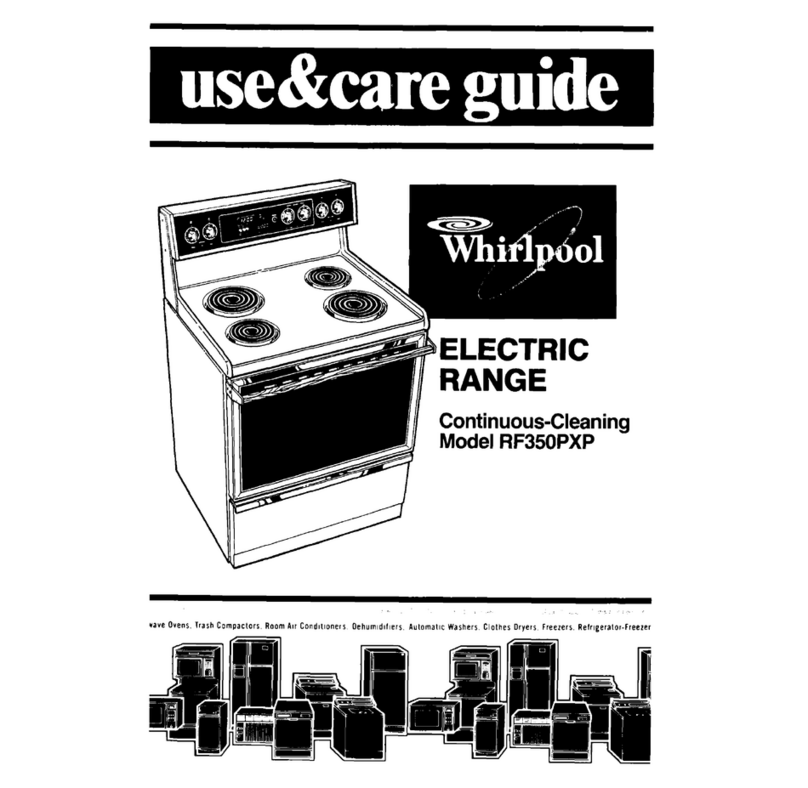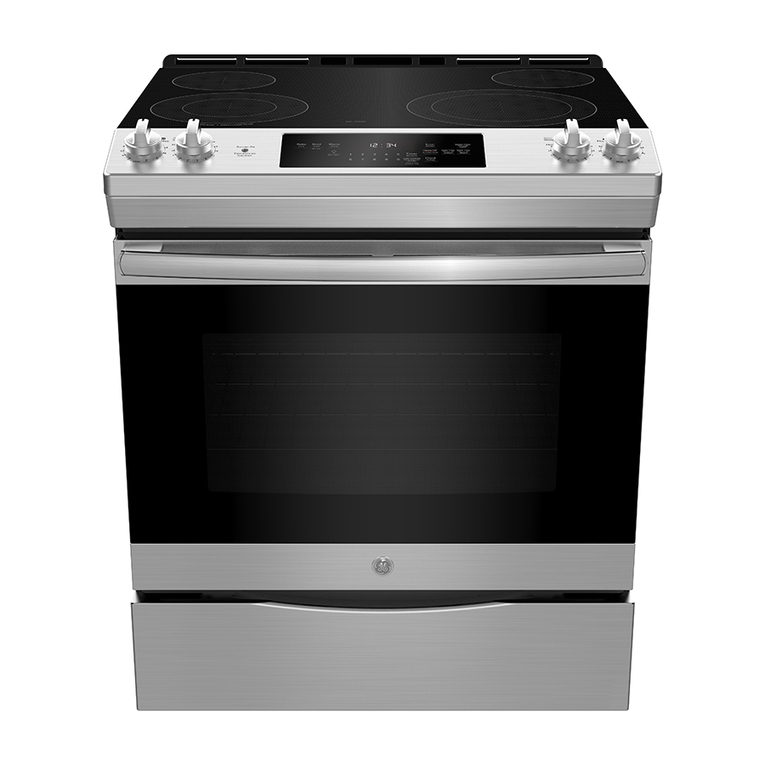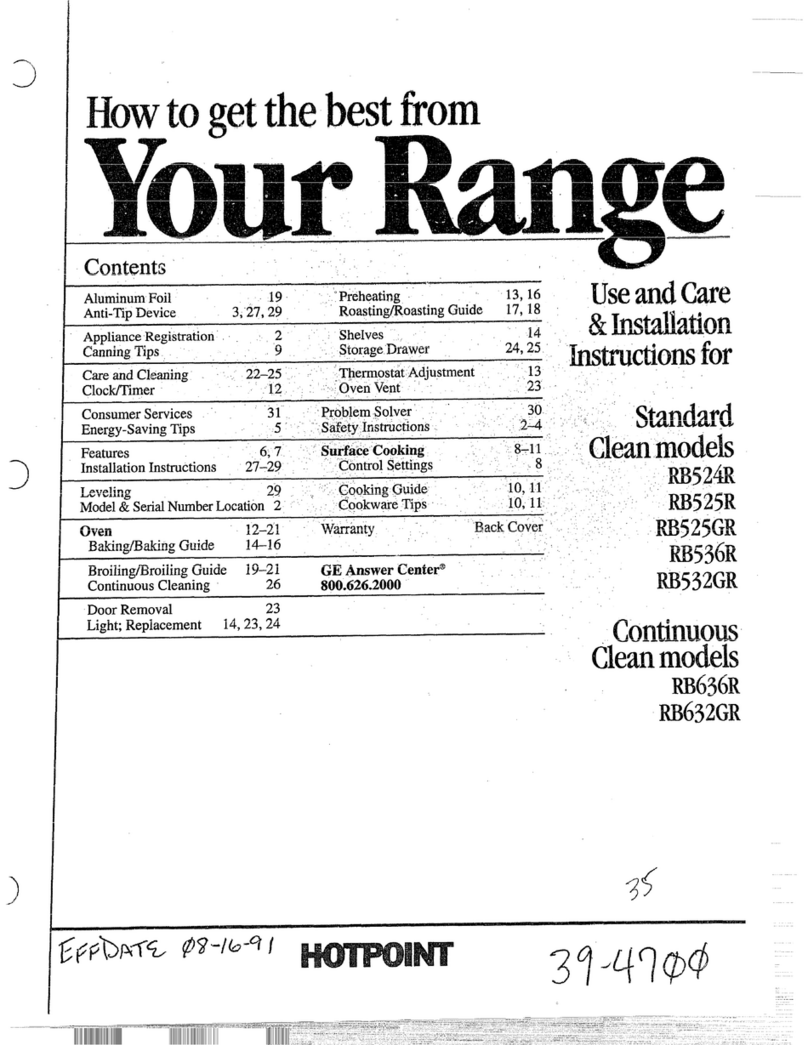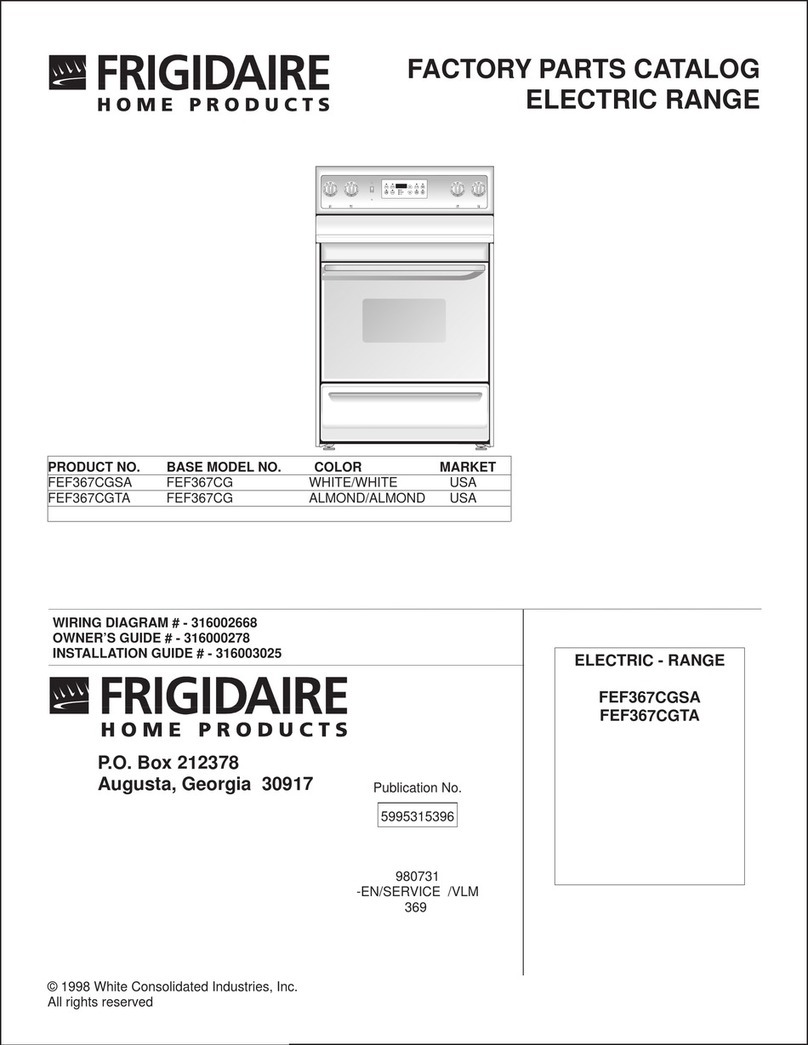
1-3
GENERAL
SURFACE COOKING UNITS
• Use Proper Pan Size – This appliance is equipped with one or more
surface units of different sizes. Select utensils having flat bottoms large
enough to cover the surface unit heating element. The use of
undersized utensils will expose a portion of the heating element to
direct contact and may result in ignition of clothing. Proper relationship
of utensil to burner will also improve efficiency.
• Never Leave Surface Units Unattended at High Heat Settings –
Boil overs may cause smoking and greasy spillovers may ignite.
• Make Sure Reflector Pans or Drip Bowls Are in Place – Absence of
these pans or bowls during cooking may subject wiring or components
underneath to damage.
• Protective Liners – Do not use aluminum foil to line surface unit drip
bowls or oven bottoms, except as suggested in the manual. Improper
installation of these liners may result in a risk of electric shock, or fire.
• Glazed Cooking Utensils – Only certain types of glass, glass/ceramic,
ceramic, earthenware, or other glazed utensils are suitable for range-
top service without breaking due to the sudden change in temperature.
• Utensil Handles Should Be Turned Inward and Not Extend Over
Adjacent Surface Units – To reduce the risk of burns, ignition of
flammable materials, and spillage due to unintentional contact with the
utensil, the handle of a utensil should be positioned so that it is turned
inward, and does not extend over adjacent surface units.
• Do Not Soak Removable Heating Elements – Heating elements
should never be immersed in water.
• Be sure you know which control pads operate each surface unit.
Make sure you turned on the correct surface unit.
IMPORTANT SAFETY INSTRUCTIONS
SELF-CLEAN OVENS
• Do Not Clean Door Gasket – The door gasket is essential for a
good seal. Care should be taken not to rub, damage, or move the
gasket.
• Do Not Use Oven Cleaners – No commercial oven cleaner or
oven liner protective coating of any kind should be used in or
around any part of the oven.
• Clean in the self-clean cycle only parts listed in this manual.
Before self-cleaning the oven, remove the broiler pan and any
utensils from the oven.
• Never keep pet birds in the kitchen – the health of birds is
extremely sensitive to the fumes released during an oven self-
clean cycle. Fumes may be harmful or fatal to birds. Move birds to
well-ventilated room.
• Important Instruction – In the event the self-clean mode “F” code
goes on, or three long beeps sound, oven is malfunctioning in the
self-clean mode. Turn off or disconnect appliance from power
supply and have serviced by a qualified technician.
VENTILATING HOODS:
• Clean Ventilating Hoods Frequently – Grease should not
be allowed to accumulate on hood or filter.
• When flaming foods under the hood, turn the fan on.
OVEN
• Use Care When Opening Door – Let hot air or steam escape
before you remove or replace food in the oven
• Do Not Heat Unopened Food Containers – Build-up of pressure
may cause container to burst and result in injury.
• Keep Oven Vent Ducts Unobstructed – the oven vent is located
above the left rear surface unit. this area could become hot during
oven use. Never block this vent and never place plastic or heat-
sensitive items on vent
• Placement of Oven Racks – Always place oven racks in desired
location while oven is cool. If rack must be moved while oven is hot,
do not let potholder contact hot heating element in oven.
• Do Not allow aluminum foil or meat probe to contact heating
elements.
GLASS/CERAMIC COOKING SURFACES
• Do Not Cook on Broken Cook-Top – If cook-top should break,
cleaning solutions and spillovers may penetrate the broken cook-
top and create a risk of electric shock. Contact a qualified
technician immediately.
• Clean Cook-Top With Caution – If a wet sponge or cloth is used
to wipe spills on a hot cooking area, be careful to avoid steam burn.
Some cleaners can produce noxious fumes if applied to a hot
surface.
DEEP FAT FRYERS:
• Use extreme caution when moving the grease kettle or disposing of
hot grease.
• Do Not Leave Children Alone - Children should not be left alone or
unattended in area where appliance is in use. They should never be
allowed to sit or stand on any part of the appliance.
• Never Use Your Appliance for Warming or Heating the Room.
• Storage in or on Appliance – Flammable materials should not be stored
in an oven or near surface units. Be sure all packing materials are
removed from the appliance before operating it. Keep plastics, clothes and
paper away from parts of the appliance that may become hot
• Wear Proper Apparel – Loose-fitting or hanging garments should never
be worn while using the appliance.
• Do Not Use Water on Grease Fires – Turn off oven to avoid spreading
the flame. Smother the fire or flame by closing the door or use dry
chemical, baking soda or foam- type extinguisher.
• Use Only Dry Potholders – Moist or damp potholders on hot surfaces
may result in burns from steam.
Do not let potholder touch hot heating elements. Do not use a towel or
other bulky cloth.
WARNING
• DISCONNECT power supply cord from
the outlet before servicing.
• Replace all panels and parts before
operating.
• RECONNECT all grounding devices.
- Failure to do so can result in severe personal
injury, death or electrical shock.
